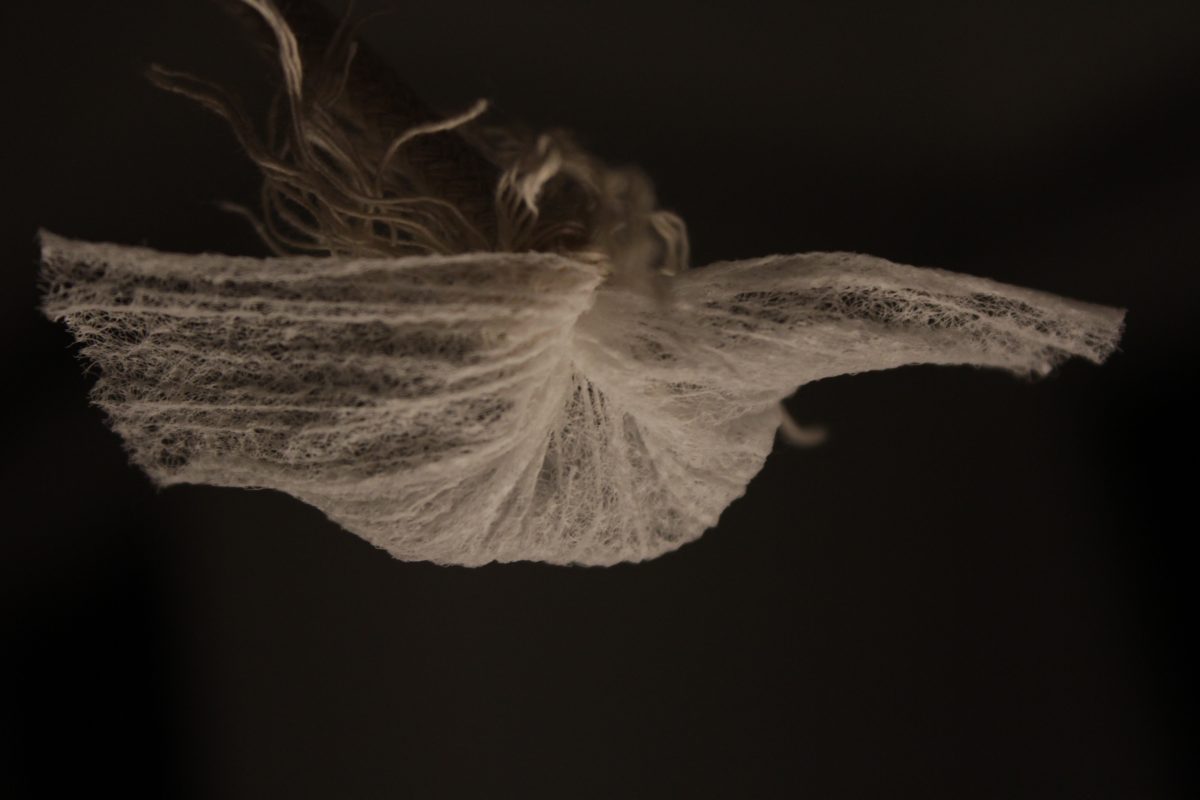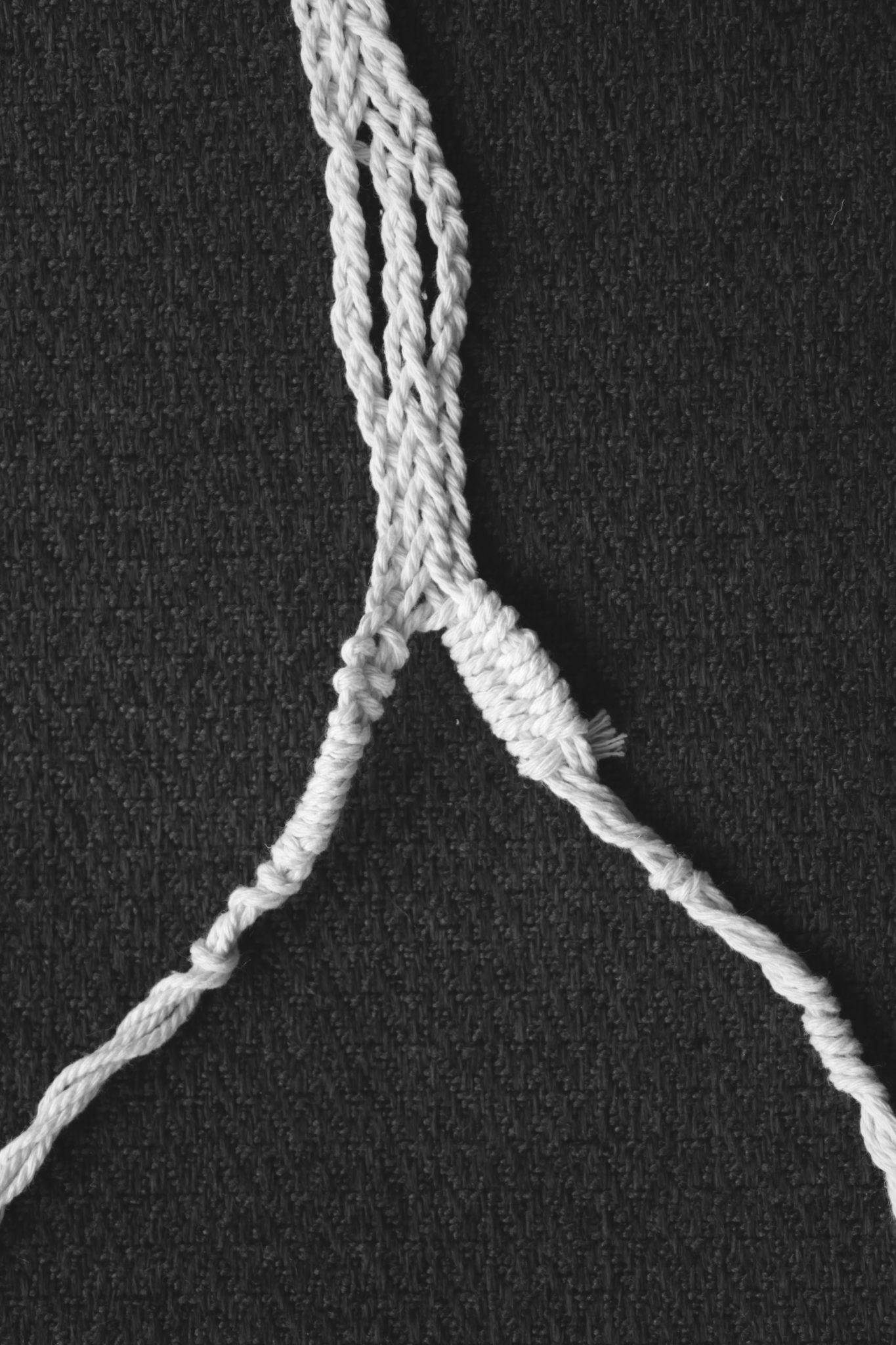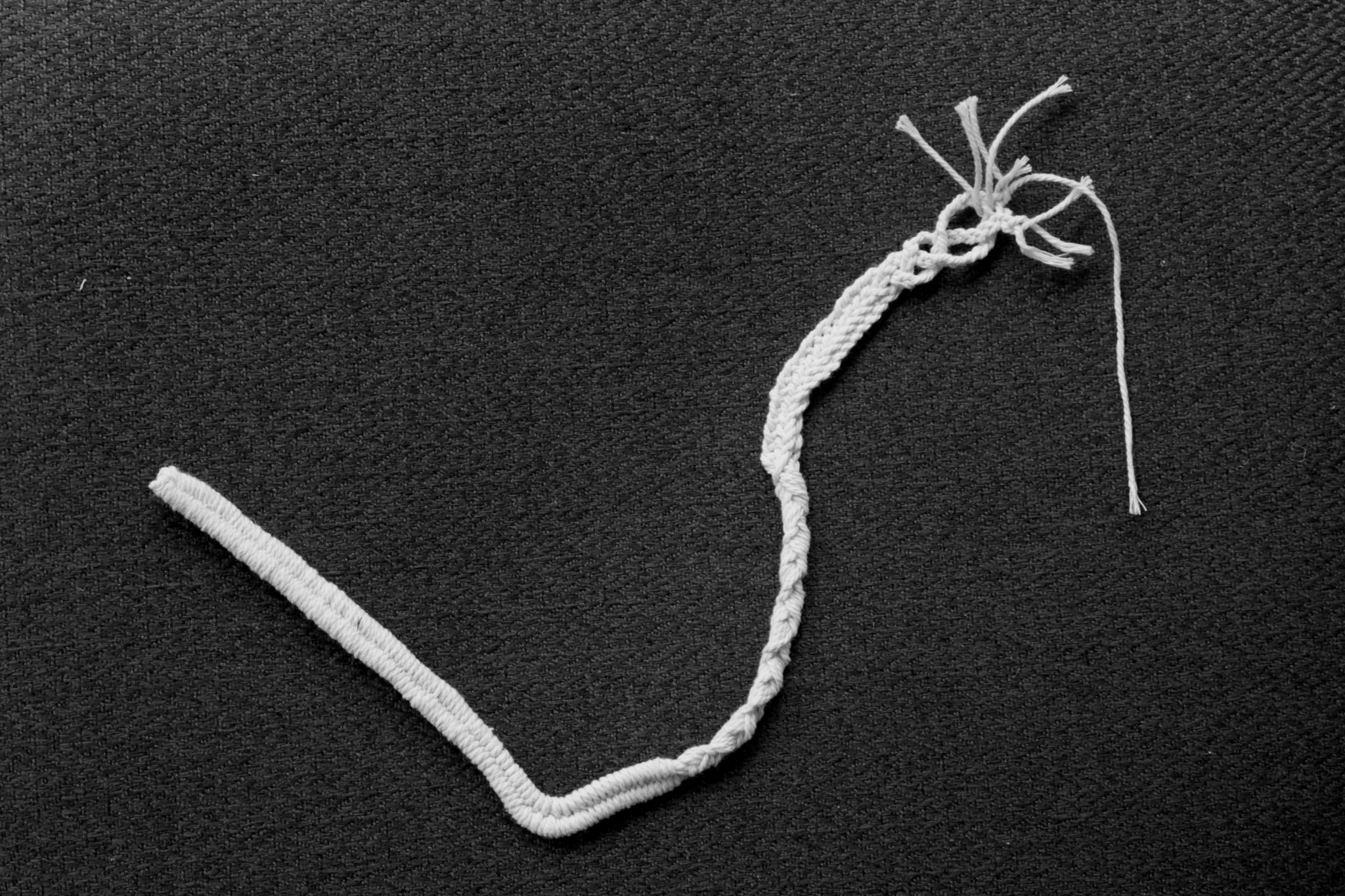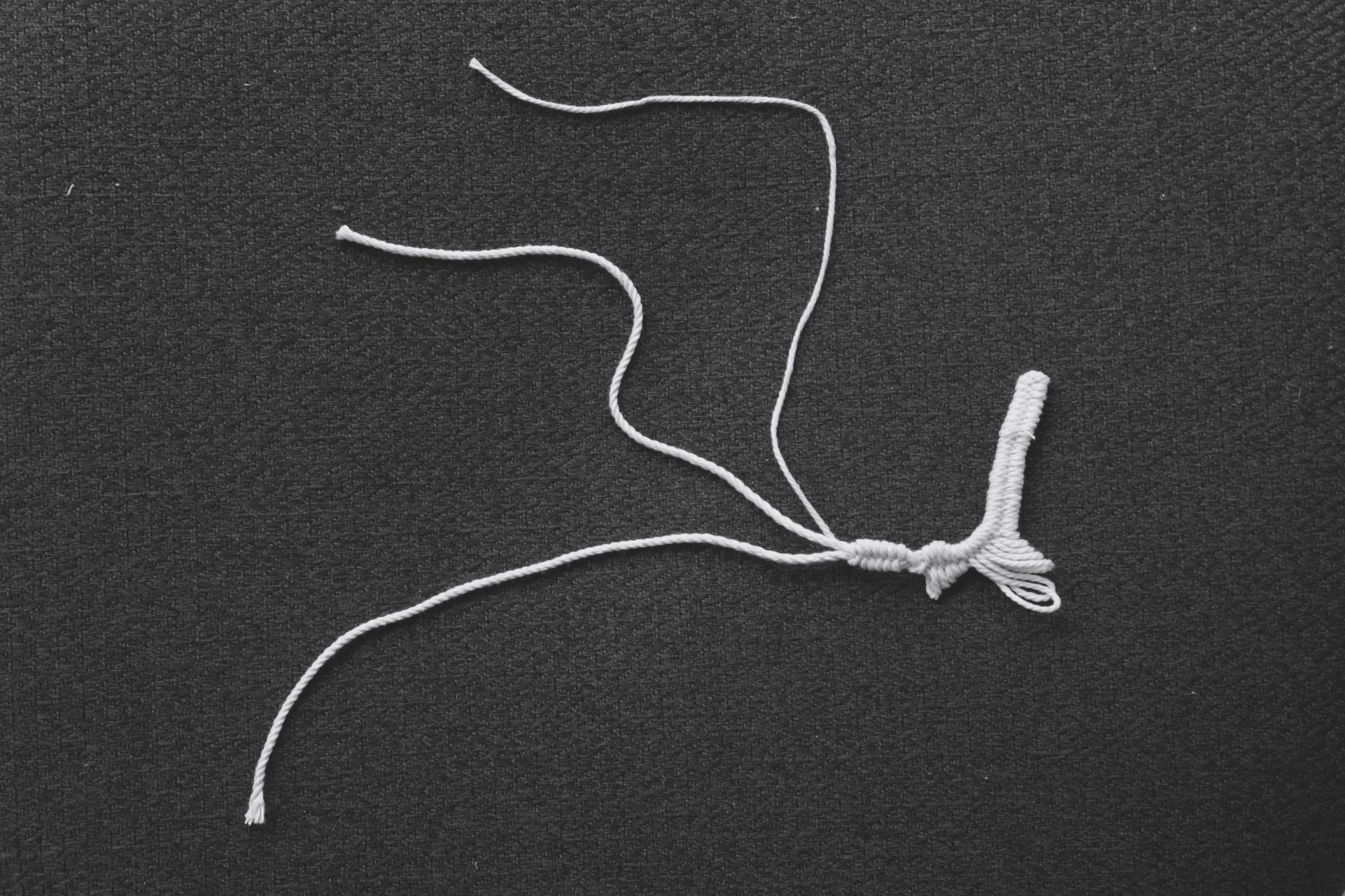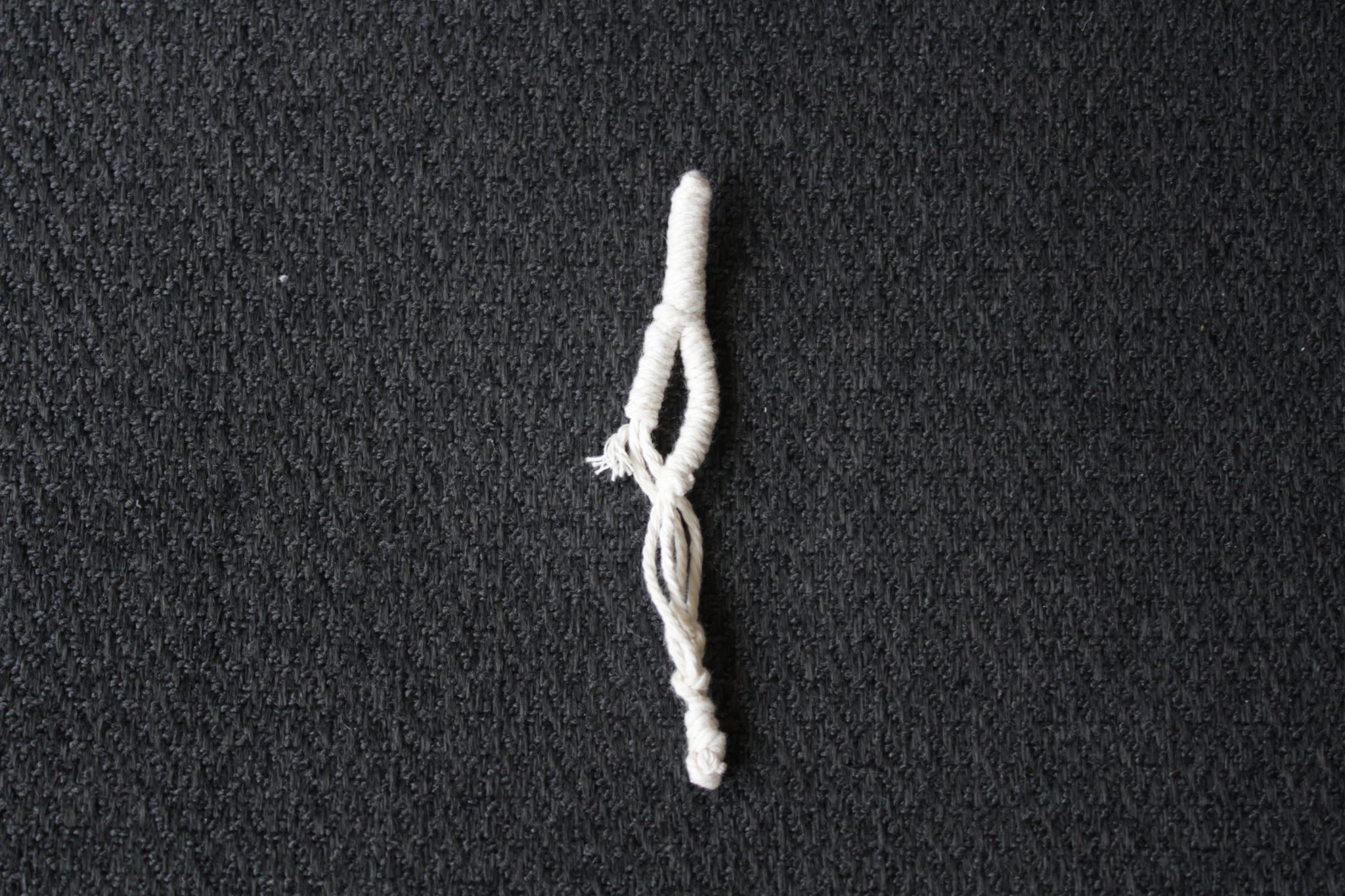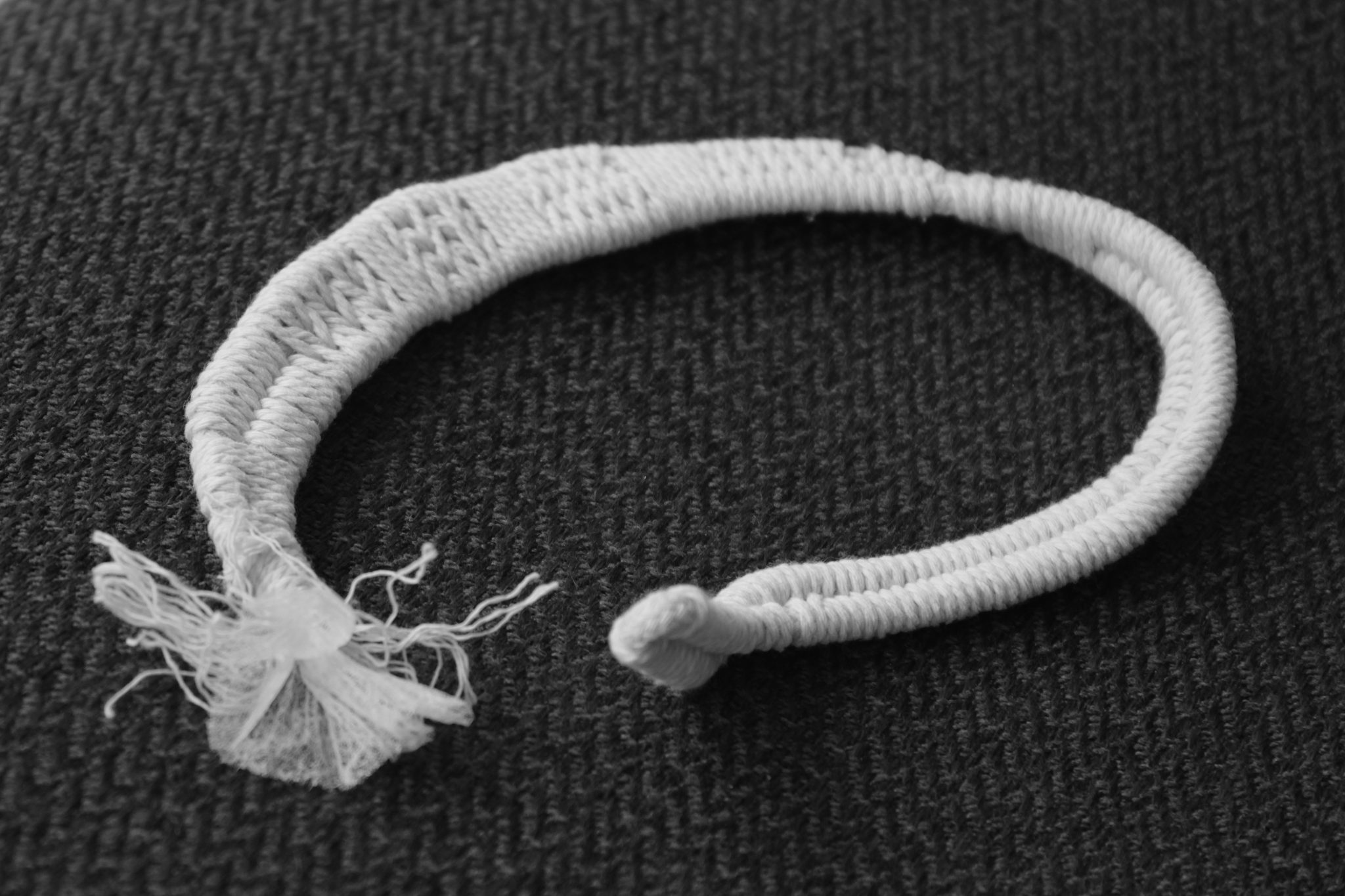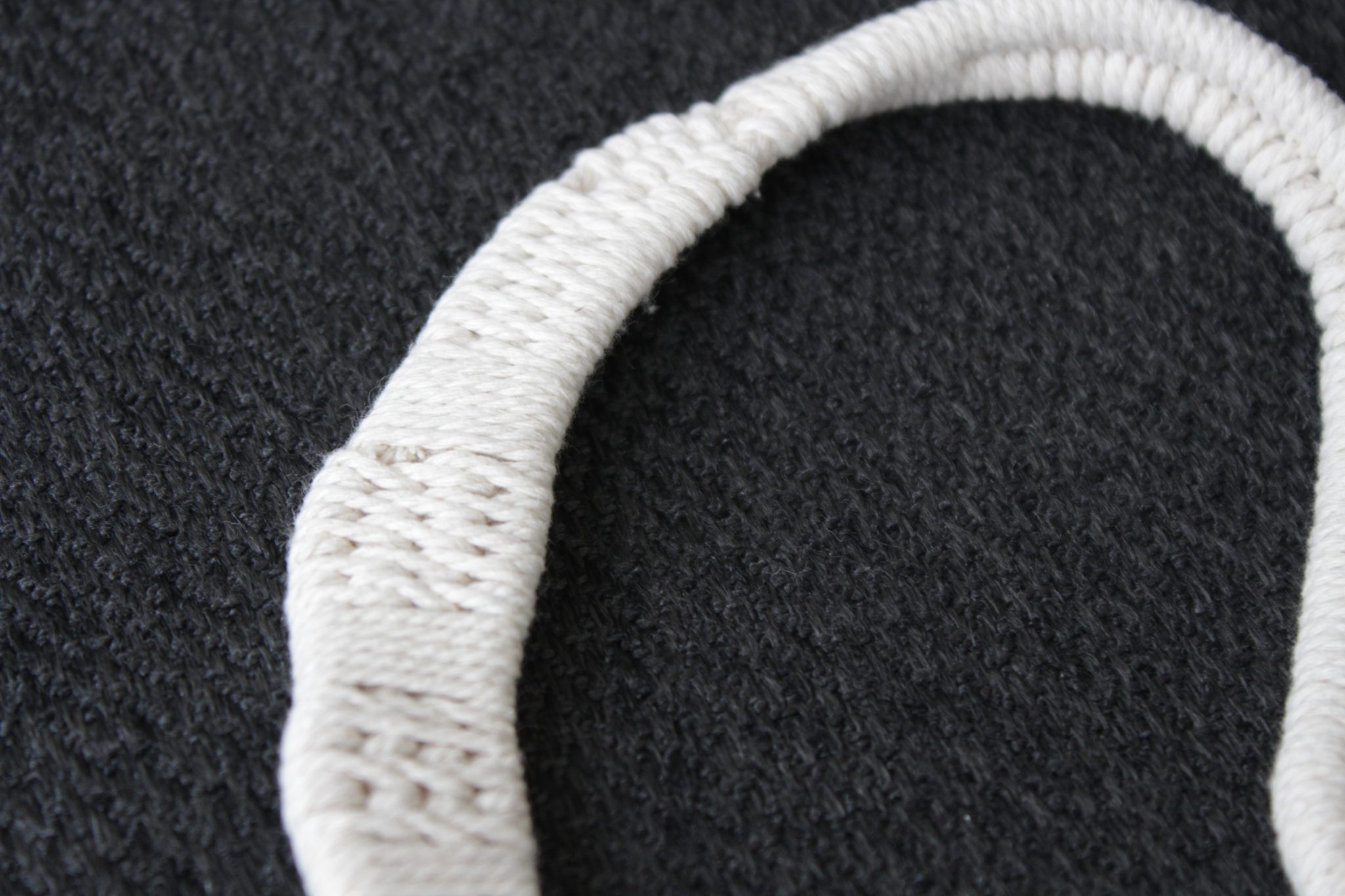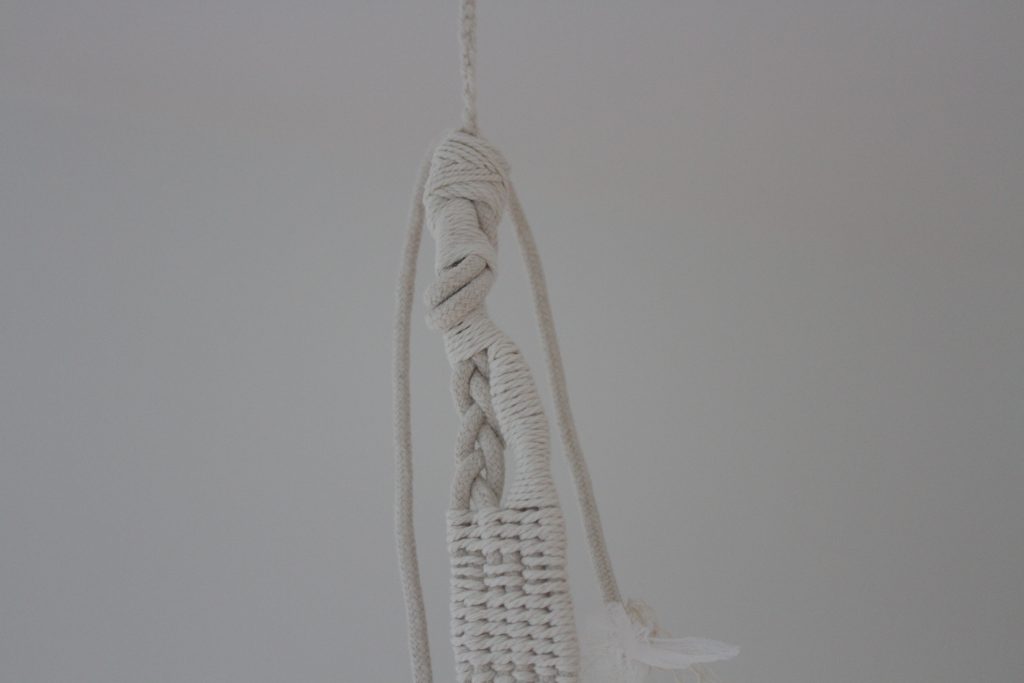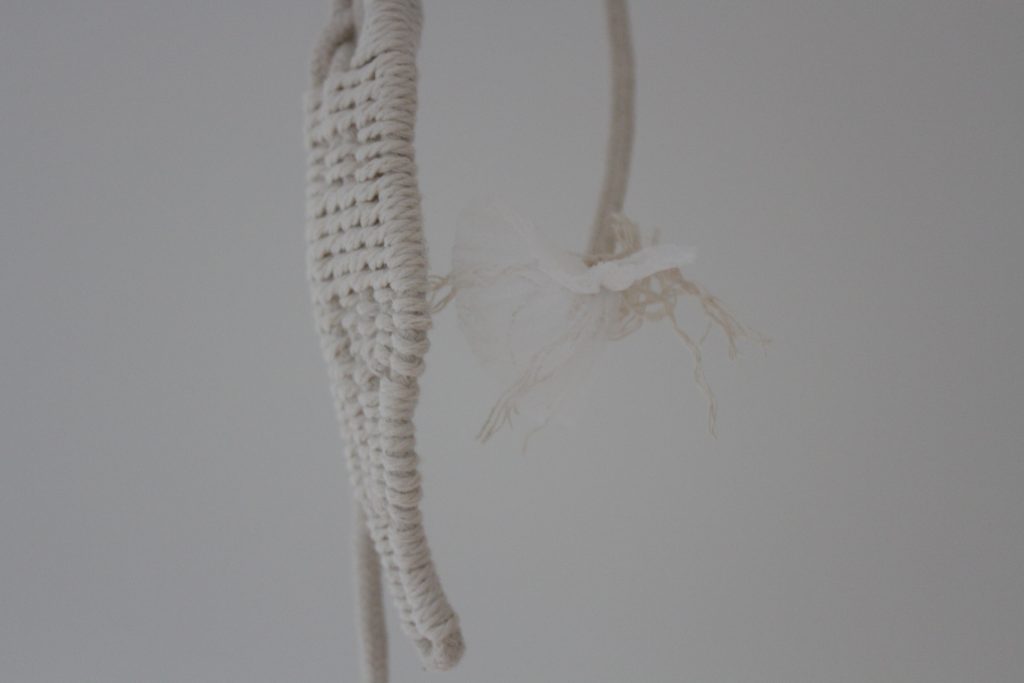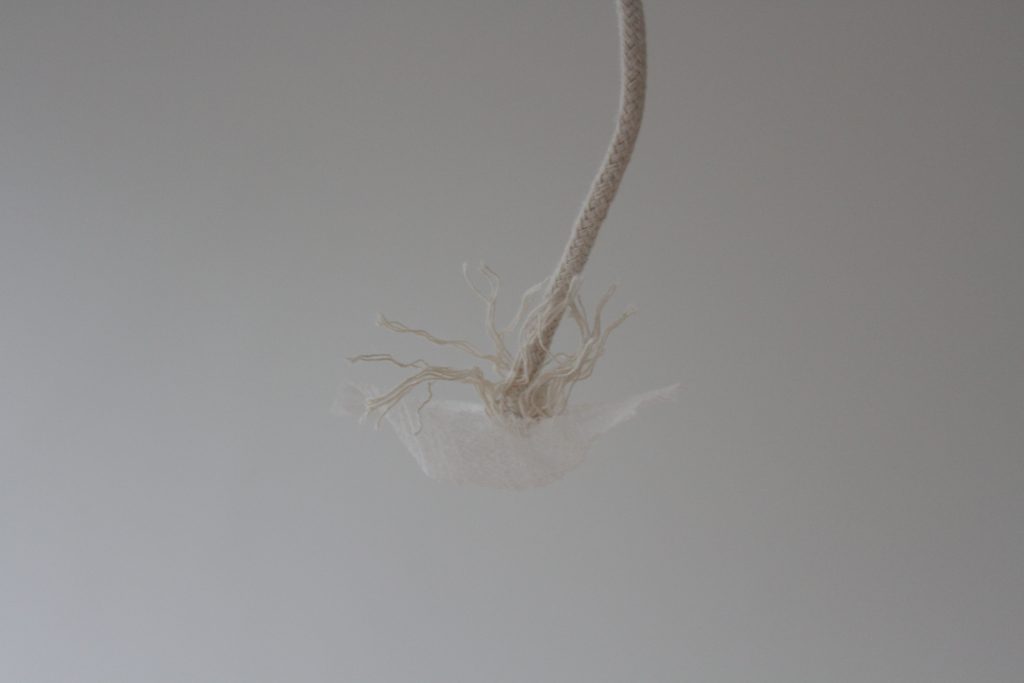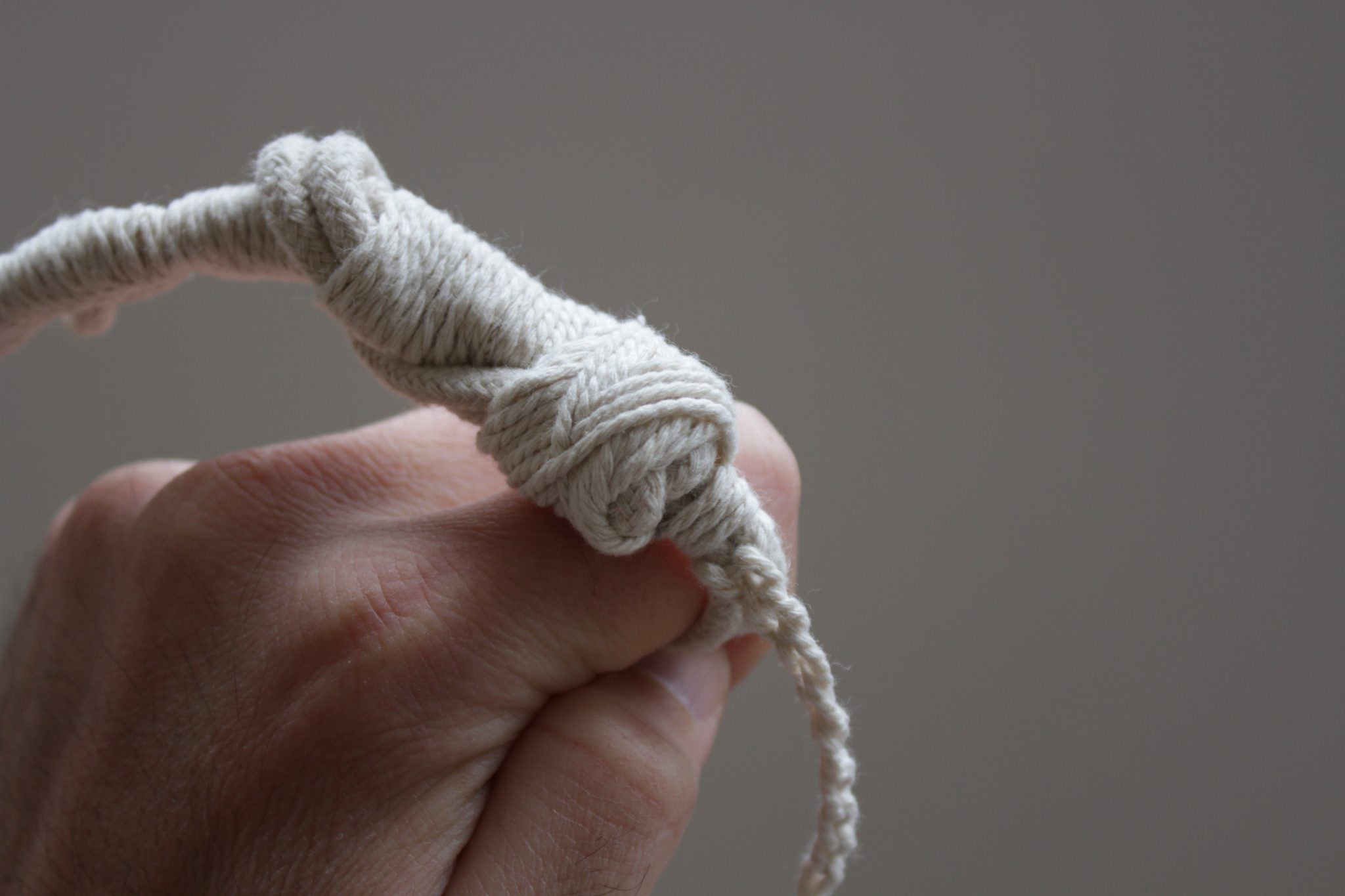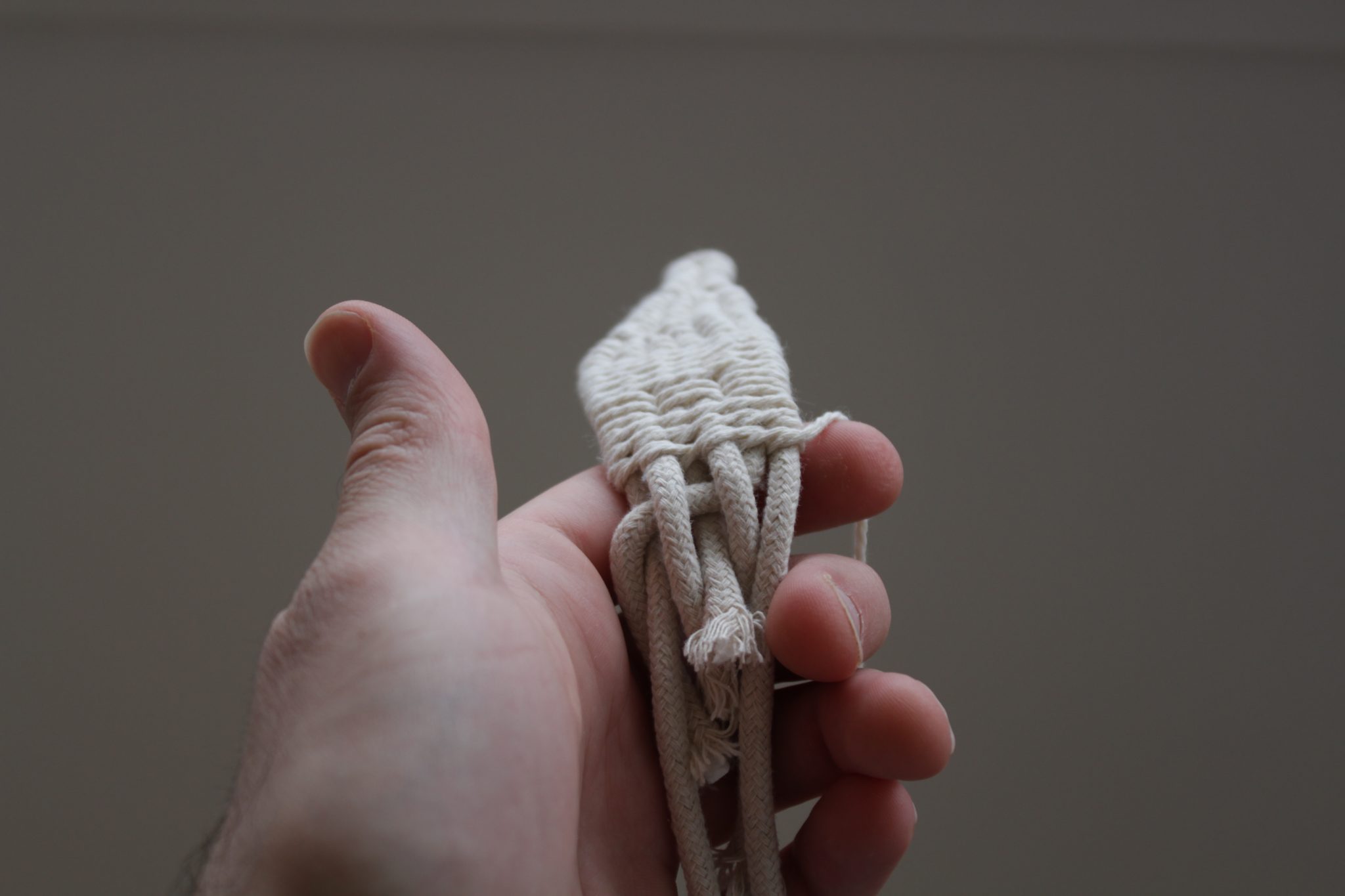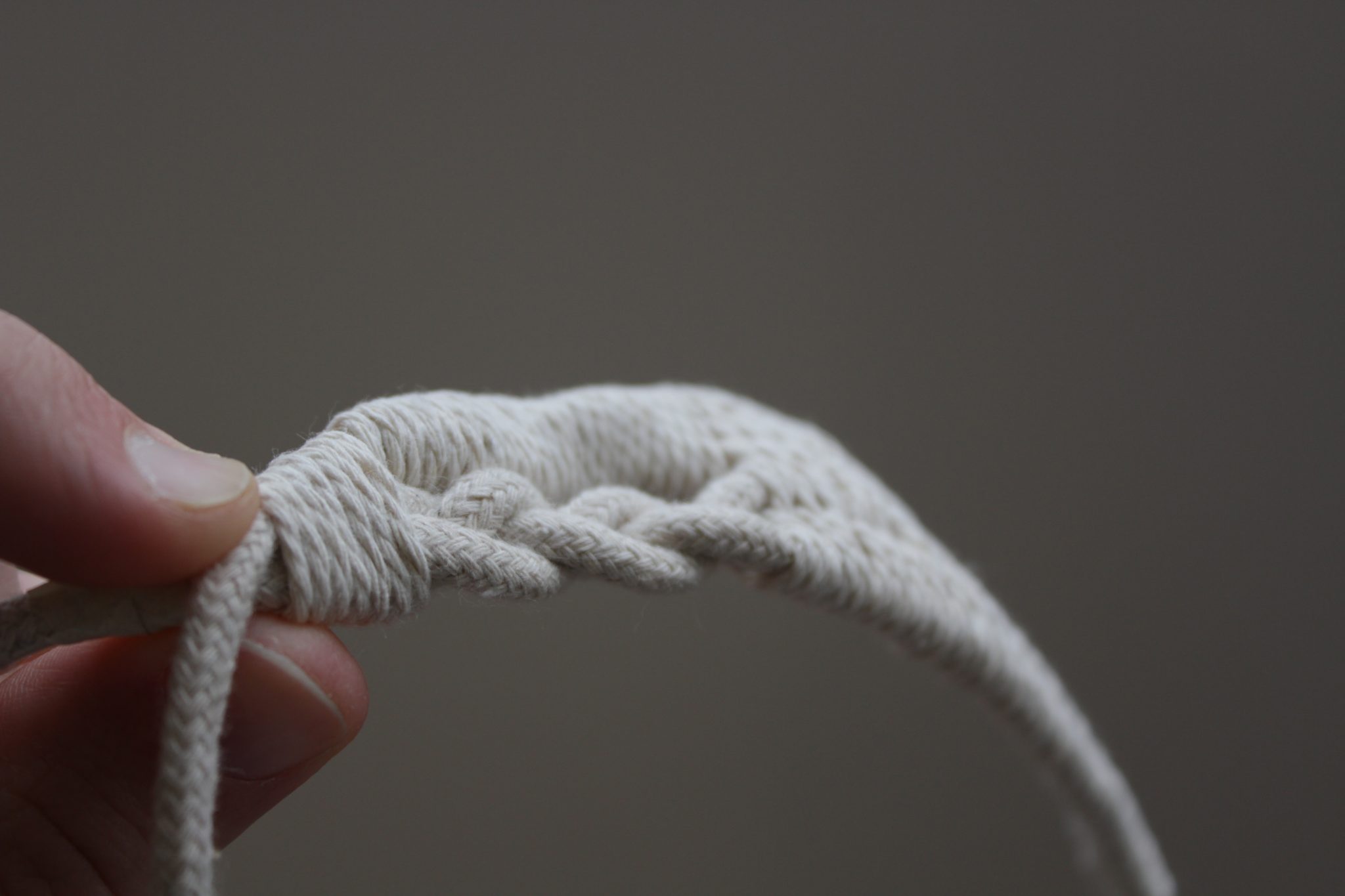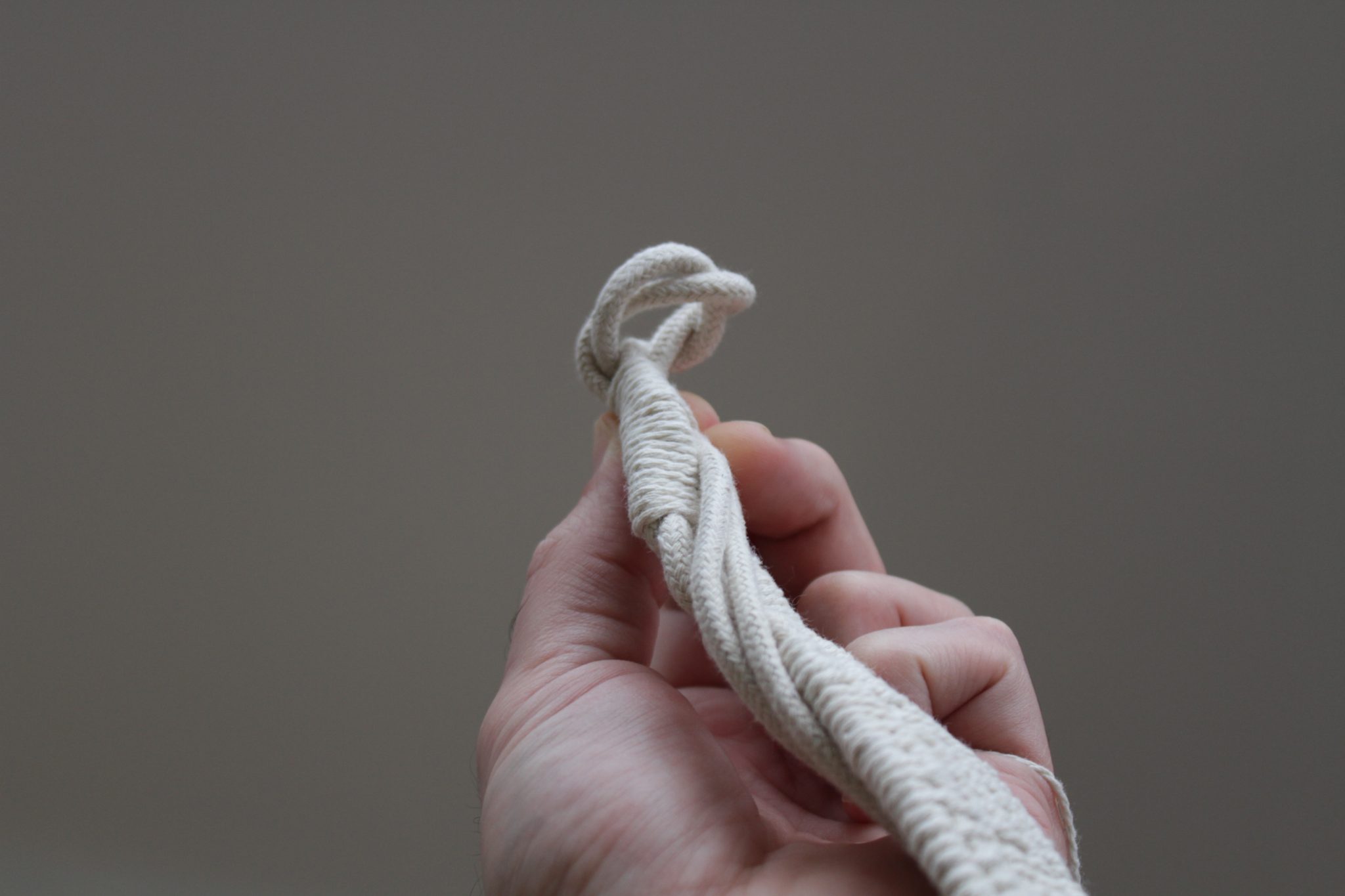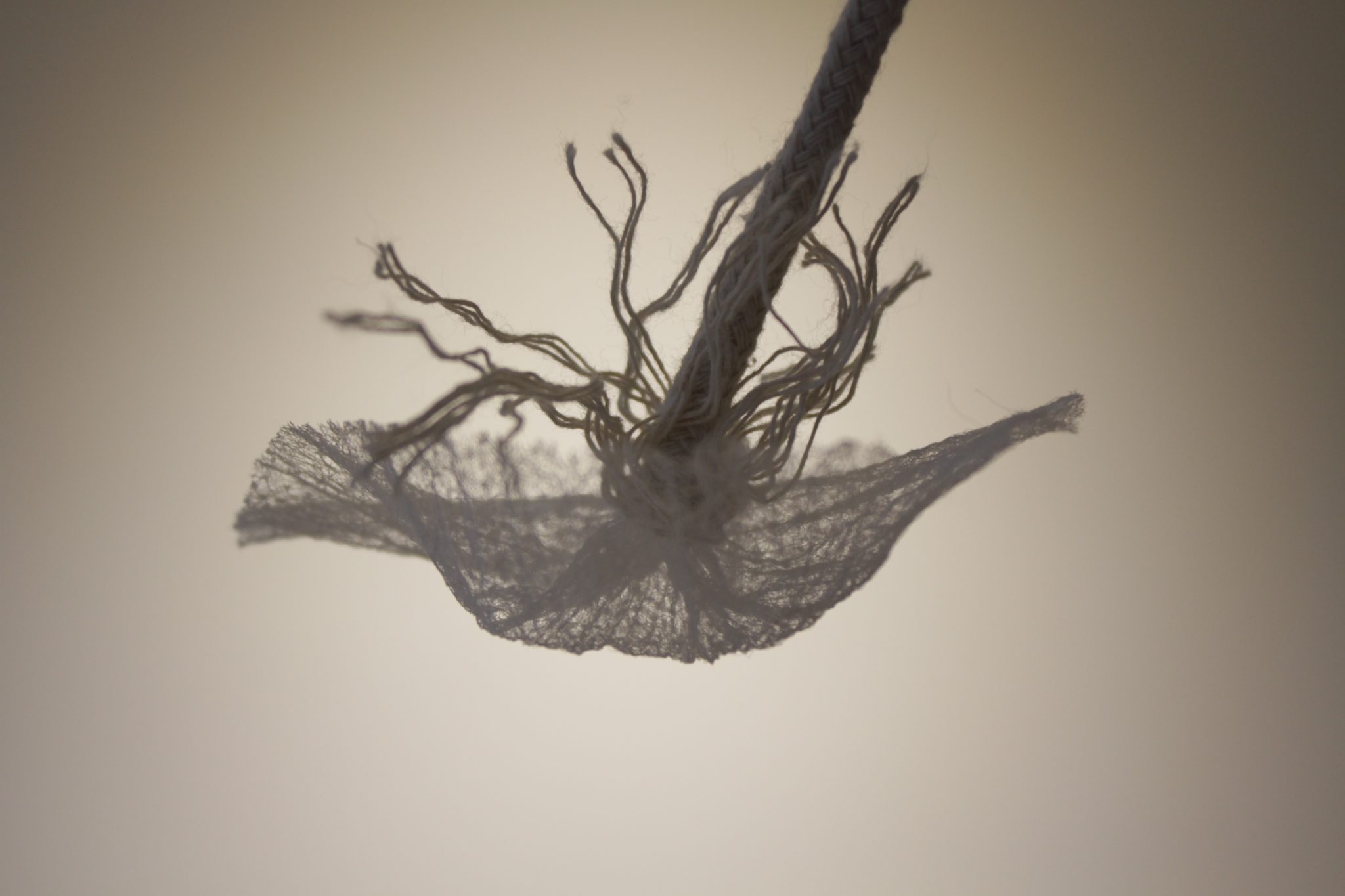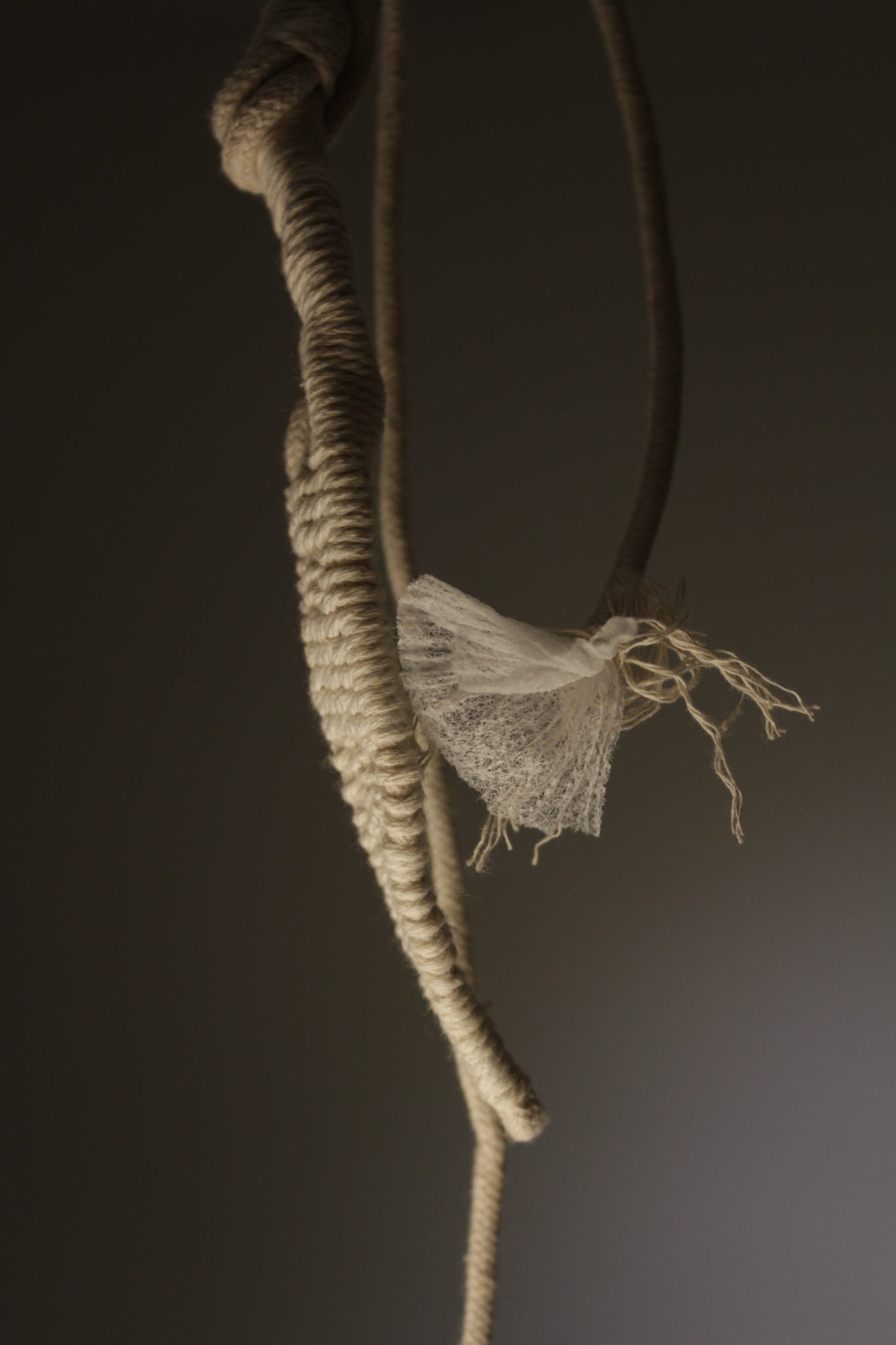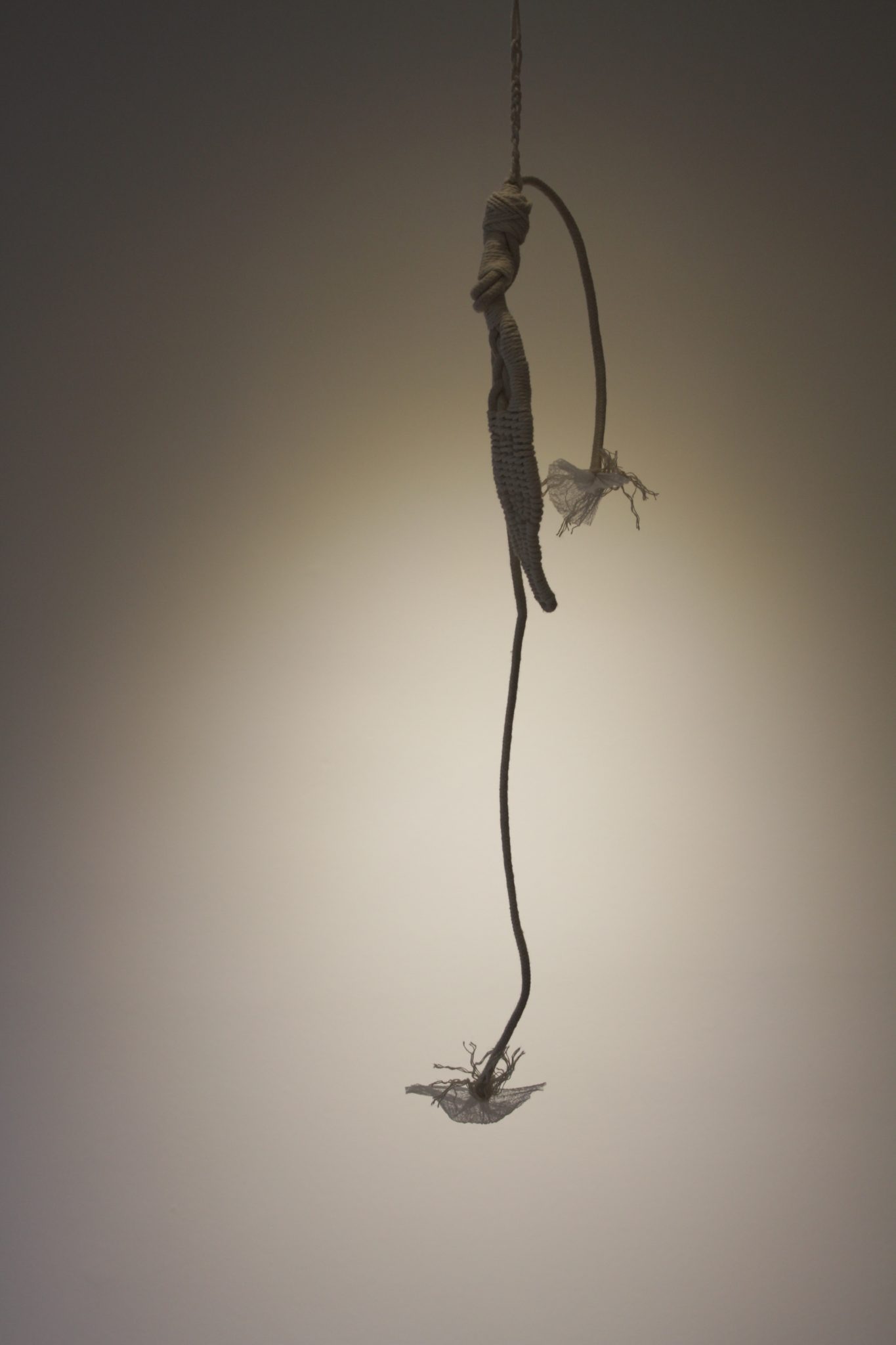The Project
For this project, the first one this term, I wanted to continue and expand in the direction I took in my last assignment for Studio I. That action, #11, consisted of explorations with thin wire, mainly using the technique of wrap-around -commonly used in jewelry-. For this assignment, I decided to use cotton twine instead of wire to experience and engage with a new material while still using many of the same weaving techniques I had used before.
The making and the objects produced
The result of this exploration was a set of objects, many of which were exercise pieces for trying different techniques, and the last two were complete objects on their own. The objects weren’t meant to be either representational or functional. They are explorative objects with the focus put on texture, asymmetry and broken patterns, with a sense of beginning, middle and end in an interaction with the material and the movement it can generate on its own.
Framework.
How does this relate
to my research?
Scissors were the only tools I needed for working on this project. The idea of being able to work and produce something with as few tools as possible in a small space is something particularly compelling for me right now. That idea relates with the work I did during the last term in Studio I -low fidelity materials and working with the resources at hand-, but it also relates to my personal story with crafts, and to a big part of where I believe so far my thesis research could head to.
My personal experience with crafts and so many of the things I am today are entirely connected to working in my shop in Argentina. Having that space allowed me to experience relevant personal growth and opening to so many new creative possibilities. For many years, the work me and my partners were producing was something I could identify with, but that came to an end when the economical crisis context in Argentina forced us to close. As time goes by and the MDes moves me to reflect, I’m realizing all the things I gained with that experience but also the ones I could have lost. Closing a shop can mean a severe backdrop to the practice of a craft person, even more so if that also means having to sell tools. In that sense, counting with the place and machinery to make can generate so many possibilities, but it can also generate dependence on infrastructure.
Even though I had to close my shop, the MDes is the best continuation and development for my practice I could have asked for. One of my goals here is to explore new ways of making and broadening my making and expressing possibilities with practices that may not require a big infrastructure. The idea of a walking shop/studio and a craft practice I could take with me wherever I may go is something I hadn’t ever considered before this program, but that actually makes a lot of sense to me now.
What can I learn from
a new material?
The cotton twine allowed me to experience a different type of connection and interaction with a material while working. The haptic experience was naturally very different from the one when using wire, and the response to traction and compression/pressure offered more possibilities and nuances than the wire. The resultant texture and the formal and aesthetic qualities also varied. The objects tend to move in different ways following the changes in pressure and density of the cotton twine turns, and the structures on themselves are much more fluid than with the wire.
What can I learn from
a new technique?
Working with the same logic but using a softer medium was also an interesting way of observing the technique. Technique exploration is always appealing to me, and it’s one of the main drives of my practice: incorporating new techniques into my skill set is for me like learning new words and broadening my expression means. A new skill means new ways of making; new ways of interacting with materials, tools and spaces; new ways of moving and engaging with my body -particularly my hands-; new ways of observing and understanding, and new creative pathways.
Aesthetics
The nature of the object was defined by the material, and many aspects of the form and aesthetics were determined by the twine and the way it interacted both with my hands and with itself, turn after turn. I felt this project ended when I completed this hanging cotton twine object that represented the technique and material explorations I had been working with over those two weeks. The artifact was complete when I found that the thick twine I was using contained a synthetic fabric in its core. This material was something I could unfold from inside the rope, and it had an interesting texture and transparency. The finishing technique was embedded in the material itself, and it consisted of revealing what was inside of it rather than trying to hide it.
The lightning and the photography make, of course, a contribution to the whole aesthetics of the project. For me, the photos not only serve a communicational purpose, but they’re also an extension of my works themselves. The process of setting the lights, placing the object and taking pictures, works for me as a way of observing the artifact from a different perspective, with a more contemplative attitude and a different mindset. The viewpoint shifts, and it’s not me watching my hands working on the object anymore; it’s now me observing the thing and how it stands/hangs and how it interacts with the light, the shadows it casts and the way it moves or the movements it may suggest. The photography process lets me see the object from the outside and reflect on it and perhaps learn something else from it once the making is over.
